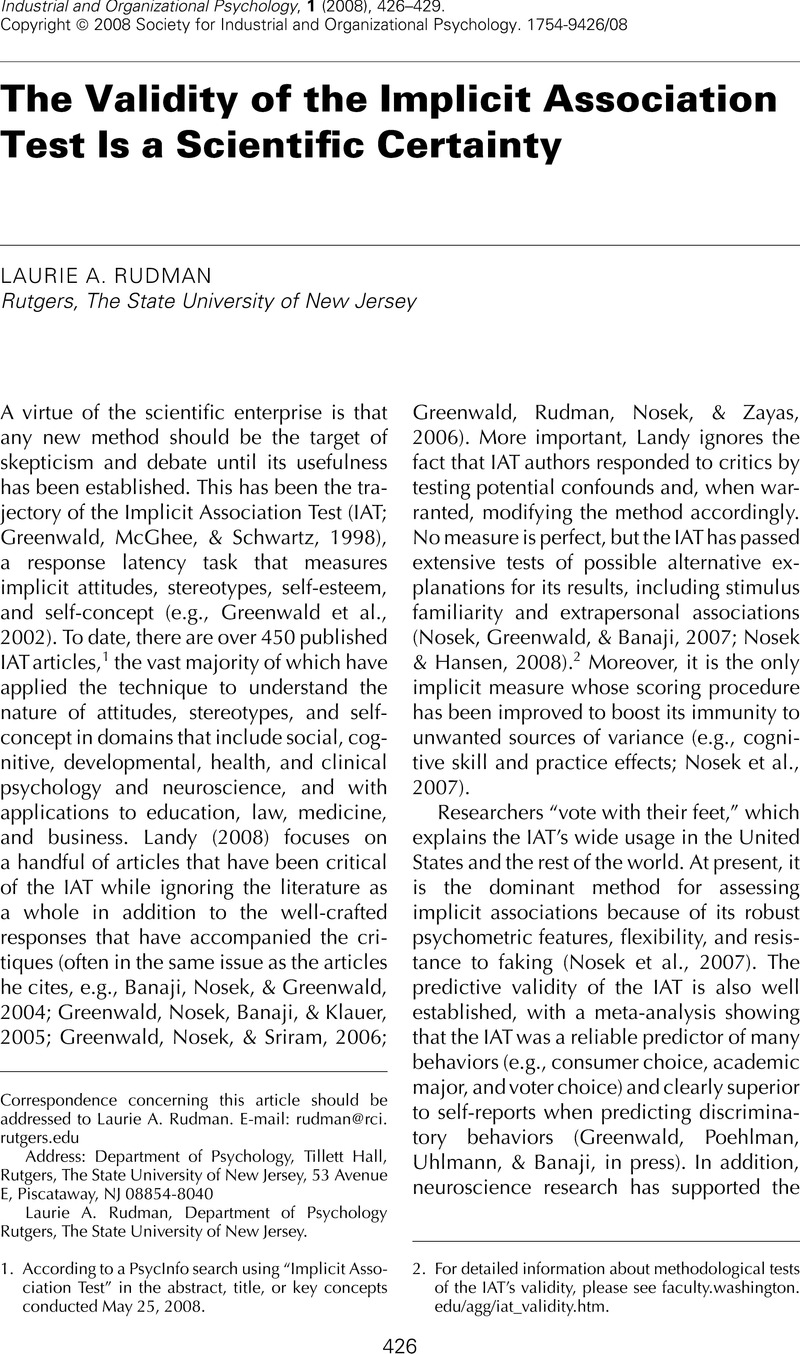Crossref Citations
This article has been cited by the following publications. This list is generated based on data provided by Crossref.
Landy, Frank J.
2008.
Stereotyping, Implicit Association Theory, and Personnel Decisions: I Guess We Will Just Have to Agree to Disagree.
Industrial and Organizational Psychology,
Vol. 1,
Issue. 4,
p.
444.
Greenwald, Anthony G.
2008.
Landy Is Correct: Stereotyping Can Be Moderated by Individuating the Out-Group and by Being Accountable.
Industrial and Organizational Psychology,
Vol. 1,
Issue. 4,
p.
430.
Nosek, Brian A.
and
Riskind, Rachel
2011.
Policy Implications of Implicit Social Cognition.
SSRN Electronic Journal,
Nosek, Brian A.
and
Riskind, Rachel G.
2012.
Policy Implications of Implicit Social Cognition.
Social Issues and Policy Review,
Vol. 6,
Issue. 1,
p.
113.
Fisher, Emily L.
and
Borgida, Eugene
2012.
Intergroup Disparities and Implicit Bias: A Commentary.
Journal of Social Issues,
Vol. 68,
Issue. 2,
p.
385.
Blanton, Hart
Jaccard, James
and
Burrows, Christopher N.
2015.
Implications of the Implicit Association Test D-Transformation for Psychological Assessment.
Assessment,
Vol. 22,
Issue. 4,
p.
429.
Derous, Eva
Ryan, Ann Marie
and
Serlie, Alec W.
2015.
Double Jeopardy Upon Resumé Screening: When Achmed Is Less Employable Than Aïsha.
Personnel Psychology,
Vol. 68,
Issue. 3,
p.
659.
Cocchiara, Faye K.
Bell, Myrtle P.
and
Casper, Wendy J.
2016.
Sounding “Different”: The Role of Sociolinguistic Cues in Evaluating Job Candidates.
Human Resource Management,
Vol. 55,
Issue. 3,
p.
463.
Sergent, Kayla
and
Stajkovic, Alexander D.
2019.
Prime and Prejudice.
Applied Psychology,
Vol. 68,
Issue. 3,
p.
391.
Moeller, Amanda N.
Johnson, Benjamin N.
Levy, Kenneth N.
and
LeBreton, James M.
2021.
Measuring and Modeling Persons and Situations.
p.
389.
Jung, Seyoung
and
Ksiazkiewicz, Aleksander
2022.
Implicit and explicit state attachment among single and dual American citizens.
Politics, Groups, and Identities,
Vol. 10,
Issue. 2,
p.
295.



